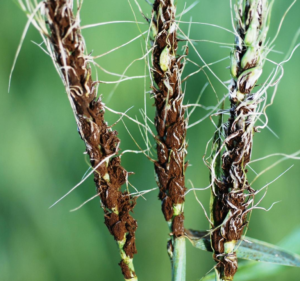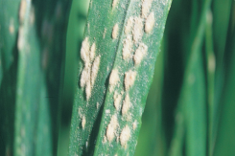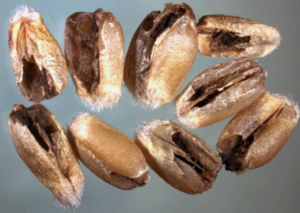Yellow Ear and Ear Cockle (Tundu disease)
Causal Organism = Anguina tritici. and rathayi bacter
Symptoms =
· In yellow ear and Ear Cockle (tundu)disease the infected plants that survive seedling mortality fail to from ears.
· Leaves become tweeded or distorted and manifest the yellow gummy phase of disease at earing preventing grain formulation at together.
· Infected plants that escape the gummy phase develop black galls in place of the normal grain.
· The disease is caused by the infected of nematodes released from galls, which are present along with seed at time of cowing.
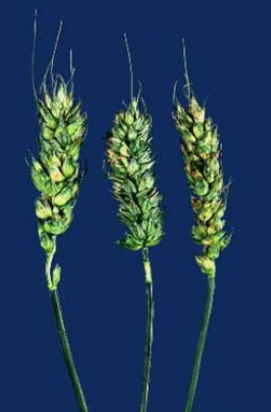
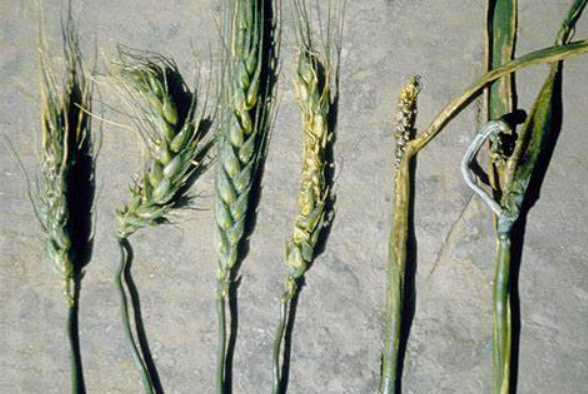
Favourable condition=
Temperature= 20-21 degree.
Relative humidity= High humidity.
Disease cycle =
Perennation= through bacteria present in the soil, plant debris, weed host,seed
The bacteria are carried along with galls developed due to ear cockle disease caused by the nematode.
Primary infection= thought contaminated seeds.
Secondary infection= thought bacterial produced in primary infection released yellow slimy ooze and cause secondary infection.
Management =
Cultural method
· Remove all the infected seed before sowing.
· Use disease registrant varieties. E.g., NP 908, NP227.
· Affected plants should be uprooted and burnt.
· Avoid seeds from infected area.
· Early sown crops usually escape infection hence early sowing should be preferred.
· Remove all infarcted part of the plant.
· Proper spacing maintain between row to row and plant to plant.
· Proper light or ventilation maintain in the field.
· Proper field sanitation application applies in field.
Chemical method
· Nemaphos proved to be most effective.
· Some Nematicides are used to control the disease. They are following:
a) D-D Mixture (20-40 gallons/acre),
b) Nemagon (1-2 gallons/acre),
c) Hexanema (10-20 kg/acre),
d) Nemaphos (10% granular; applied at the rate of 5-10 gallons/acre).

